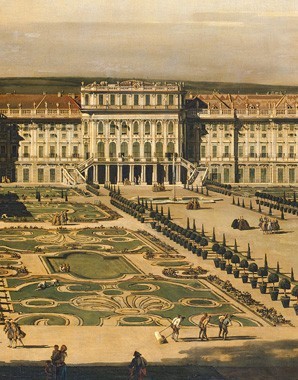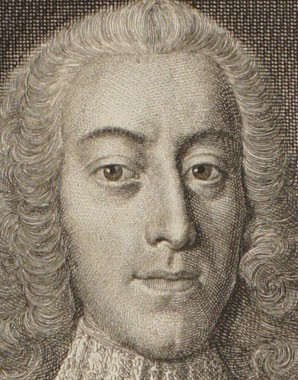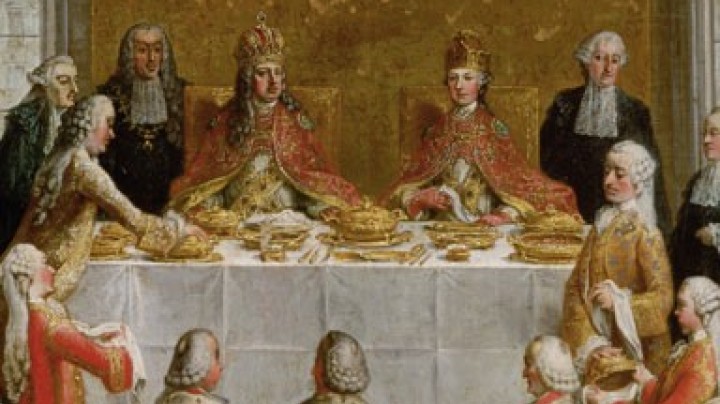Maria Theresa in Turkish dress
Not without my janissaries: the fashion for all things Turkish seized the whole of Europe in the eighteenth century, and the Viennese Court took to holding celebrations and wearing costumes alla turca.
Hofmarschall (Chief Court Marshal) Prince Johann Josef Khevenhüller-Metsch describes a Turkish celebration held at Schönbrunn on 3 October 1743… not only attired in grand gala and holding a large soupé as well as a ball, but the palace and the middle prospect of the garden were illuminated with many lanterns, and an entrée in oriental costume through the garden followed by a ballet in the ballroom was staged by the palace opera troupe.
The fashion for all things Turkish reached its peak in the eighteenth century, with Ottoman emissaries arriving in Paris, Vienna and Berlin. The magnificent receptions they hosted fuelled Western notions of a faery realm of untold riches.
Depictions of Europeans in Turkish costume in an Oriental setting were all the rage. These portraits were popularised by the Marquise de Pompadour: in the 1750s she commissioned three portraits of herself dressed as a Sultana.
From France, the new Turkish vogue took hold of the Habsburg Court at Vienna. Courtiers dressed in ‘Turkish’ costume (or what was regarded as such) and danced at balls in oriental finery. Even weddings were held in oriental-type settings.
The nuptials of the Prince-elector of Saxony, Friedrich August II, and the Austrian Archduchess Maria Josepha in 1719 reflected the fascination of the court with the exotic Orient: for the celebrations the father of the bride had a palace in ‘Turkish style’ erected and provided janissaries as an escort; Turkish tents were erected to receive the bride and at the wedding banquet the guests, who included the Turkish ambassador, were requested to appear in Turkish costume.

























